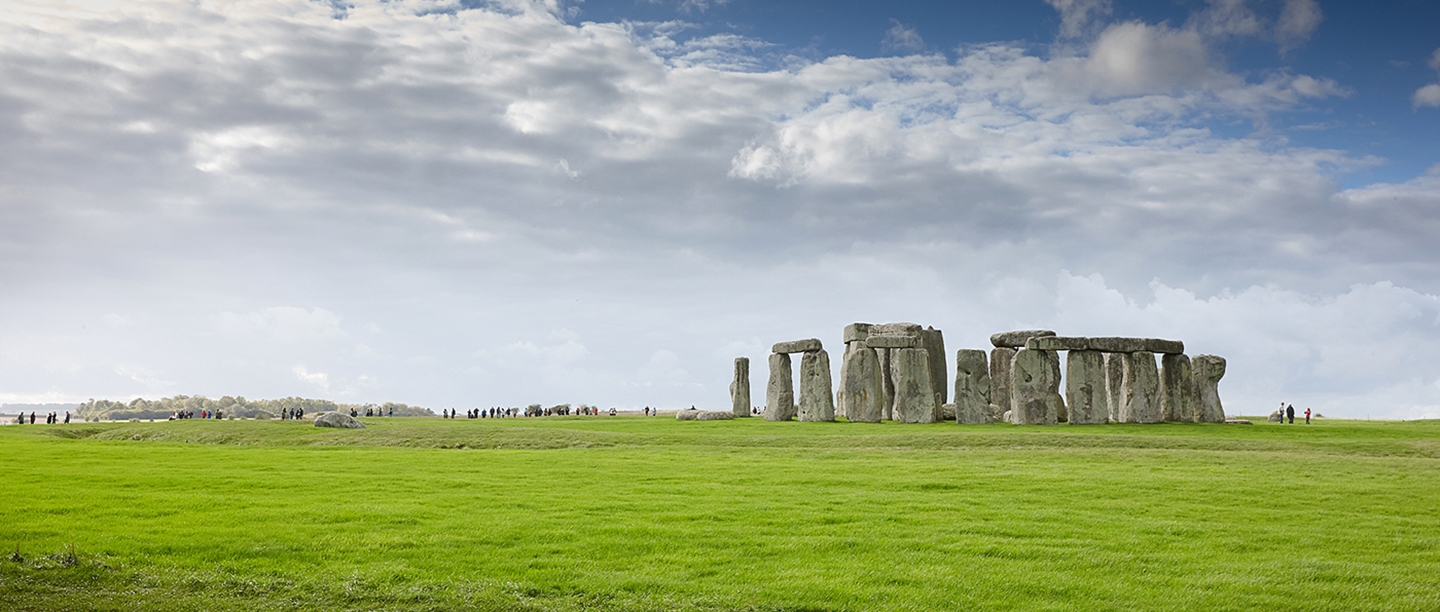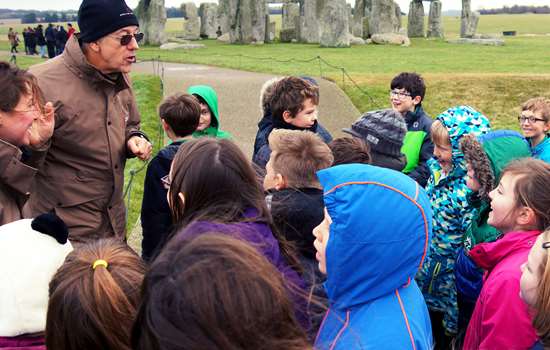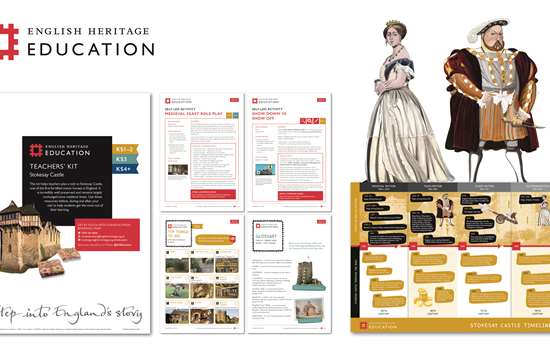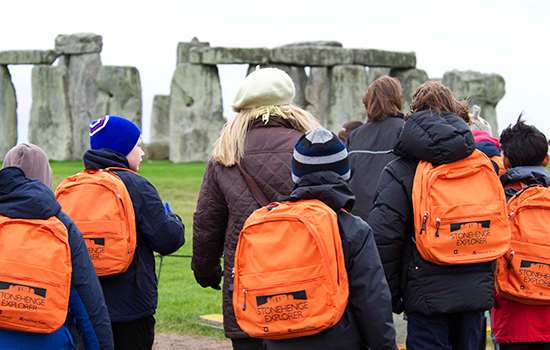Get to Grips with the Area
The earliest known monuments in the Stonehenge landscape date from before Stonehenge itself was built. At this time, the chalk downland in the area could have been an unusually open landscape, unlike the rest of southern England which was largely covered by woodland.
The large open landscape around Stonehenge possibly explains why it became home to a Neolithic monument complex. It included the causewayed enclosure at Robin Hood's Ball, two cursus monuments or rectangular earthworks (the Greater, or Stonehenge, and Lesser Cursus), and several long barrows, all dating from the centuries around 3500 BC.
Stonehenge itself developed over hundreds of years. The Heel Stone and the low mound known as the North Barrow were early components of the monument. The earliest known major construction was a circular ditch with an inner and outer bank built around 3000 BC. Within this bank and ditch there may have been some timber structures, while inside the bank were 56 pits, known as Aubrey Holes. People buried cremations in and around these holes as well as in the ditch. The stones were set up in the centre of the monument in about 2500 BC and about 200-300 years later the central bluestones were rearranged to form a circle and inner oval.
At the same time that Stonehenge was built, people lived at nearby Durrington Walls, where there were timber monuments including Woodhenge. Later, in the early Bronze Age, hundreds of round barrows (burial mounds) were built in the Stonehenge landscape, some of which contained burials accompanied by grave goods of gold, copper and amber.
Top Resources
-
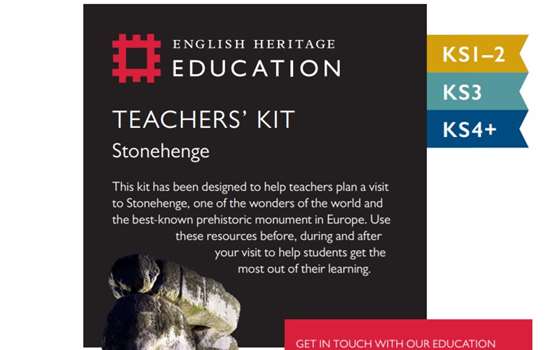
Stonehenge Teachers' Kit (KS1-KS4+)
Our Stonehenge Teachers' Kit is a comprehensive tool for teachers and learners, providing historical information, site plans, glossary, timeline and activities.
-
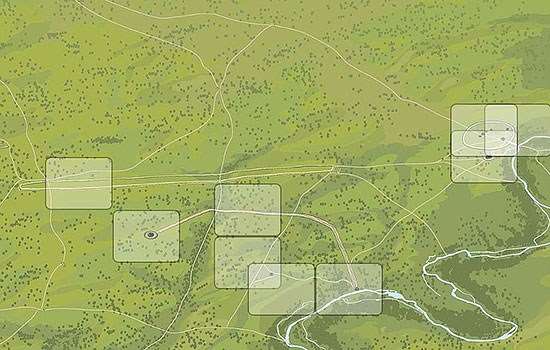
Explore the Stonehenge Landscape
Use interactive images to discover what the landscape around Stonehenge has looked like through history.
-
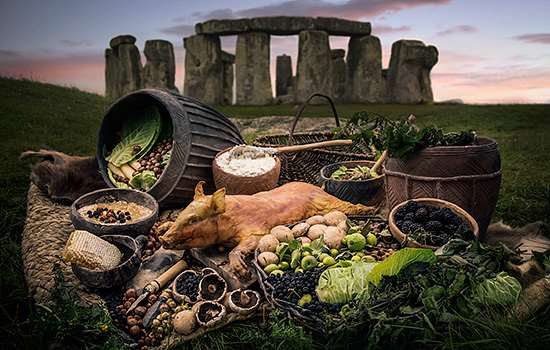
Food and Feasting at Stonehenge
Find out more about what the people who built and used Stonehenge ate, how they cooked and served their food, and the cutting-edge science behind these discoveries.
-
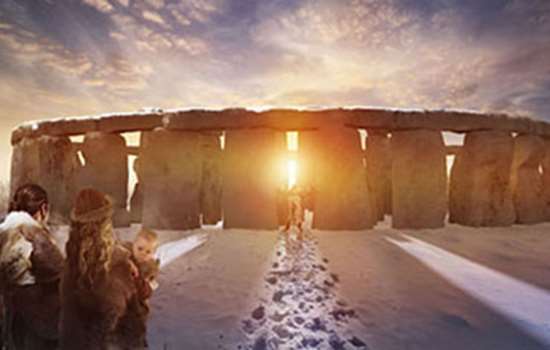
Learn: Solstice at Stonehenge
Read our guide to celebrating the solstice at Stonehenge to find out more about the story of the solstice and why Stonehenge is important.
Suggested Activities
-
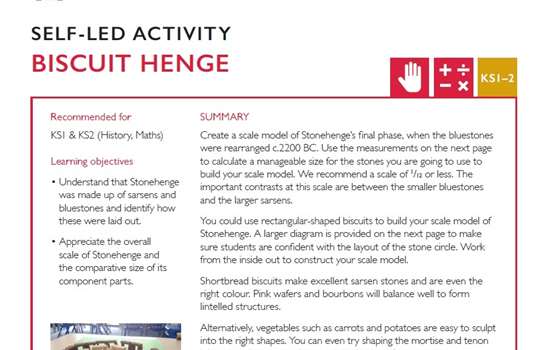
Biscuit Henge (KS1-KS2) - Stonehenge Teachers' Kit
Try building Stonehenge with biscuits to create your own Biscuit Henge.
-
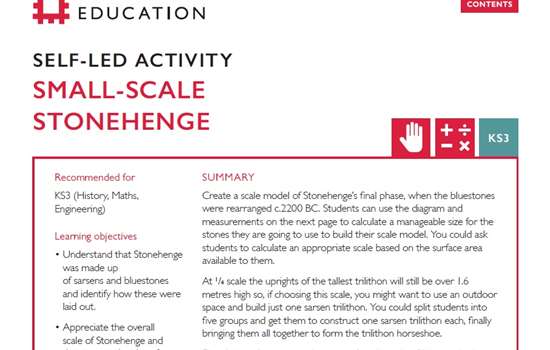
Small-Scale Stonehenge (KS3) - Stonehenge Teachers' Kit
Could you be a Stonehenge engineer? Use this activitiy to help you build an accurate small-scale model of Stonehenge's final phase.
-
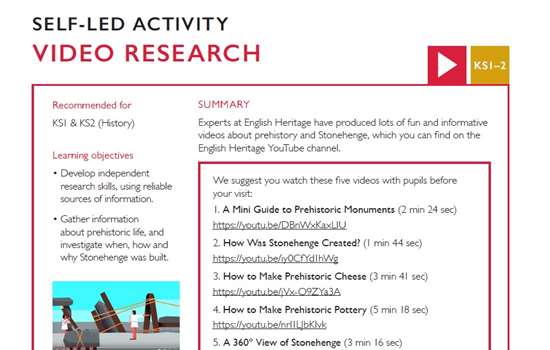
Video Research (KS1-KS2) - Stonehenge Teachers' Kit
Use this video research activity to discover how prehistoric people built their monuments and lived their daily lives.
-
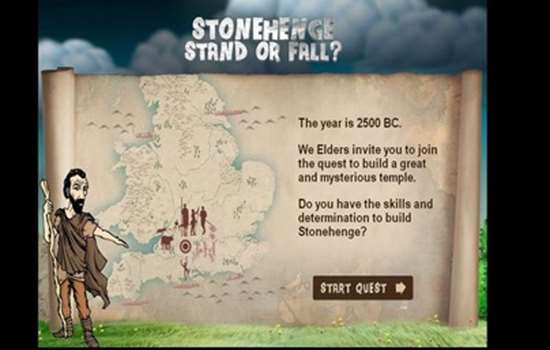
Stonehenge: Stand or Fall? Game
Can you raise Stonehenge or will it fall? Try building Stonehenge with this interactive game.
Video Resources
-
A Mini Guide to Prehistoric Monuments
Find out more about prehistoric monuments in this short animation.
-
How Was Stonehenge Created?
How and why was Stonehenge created? Discover some of the facts and theories in this short film.
-
What Happened in the Neolithic?
Uncover the Neolithic period in this easy guide.
-
History at Home Live! Stonehenge and Summer Solstice
Join Ben Shires and our expert Susan Greaney as they explore Stonehenge's relationship to the summer and winter solstices.
Link Your Learning
ENGLISH – There have been many different theories for the creation of the monuments in the Stonehenge landscape throughout history. Learners could find out about some of these and develop their own myths and legends explaining the creation of the Stonehenge landscape.
MATHS – Learners could use maps of the Stonehenge landscape to identify the dominant shapes used in prehistoric monuments. What can this tell us about the shapes that were important to prehistoric people?
SCIENCE – Use the Stonehenge Skyscape page to explore the alignment between the sun and Stonehenge and find out more about how and why the solstices happen.
GEOGRAPHY – Use a map of the Stonehenge landscape to practice map-reading. Ask learners to generate coordinates or grid references for particular monuments or ask them to find monuments by using their coordinates or grid references.
ART AND DESIGN – Artists in the 19th century who were part of the Romantic art movement took inspiration from the landscape, ruined monuments and the past. Encourage your learners to create their own Romantic-style sketches or paintings by taking inspiration from monuments in the Stonehenge landscape.
DRAMA – Challenge your learners to build different monuments from the Stonehenge landscape in freeze frames using only their bodies.
